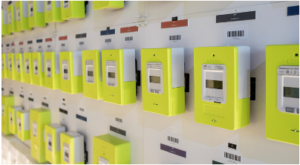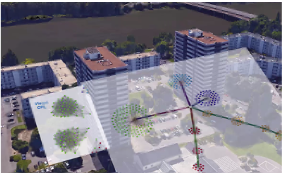Smart Metering
G3-PLC was originally developed for massive smart meter rollouts and, therefore, it was designed to deal with harsh channel conditions commonly found in the low voltage distribution network, by including features such as automatic adaptive modulation. G3-PLC is being used for smart metering globally, in different bandplans.
Millions of G3-PLC devices are on field today and this will get much more in the coming years. In late 2020, almost 30 million Linky smart meters are deployed over the French territory with daily reading rates exceeding 98%.

On an international scale, G3-PLC has also been selected for smart metering applications by various utilities, such as Netz Niederösterreich, Wiener Netze, Electrică Romania, ST Latvia and many others.
Please visit our worldmap for ongoing deployments.
As testified by the high-performance levels obtained, G3-PLC meets the technical and reliability requirements necessary in the hostile environment of PLC, because of its unique features such as a mesh routing protocol to determine the best path between remote network nodes, a “robust” mode to improve communication under noisy channel conditions and channel estimation to select the optimal modulation scheme between neighbouring nodes. Its support of IPv6, enabling easy integration of various application profiles, also adds high versatility and carries G3-PLC well into the future.
G3-PLC is constantly evolving to address new applications and challenges, making it successful in different countries and environments. The next generation PLC standard, the G3-Hybrid, is the first industry hybrid standard offering extended capabilities in one seamlessly managed network over both media, PLC and RF. This way, the revolutionary hybrid profile provides an efficient and cost-effective solution for smart grid, smart city, industry and IoT applications.
Click here for more information
Grid-Oriented Services for Smart Metering
G3-PLC is by nature connected to the grid, so the communication protocol actually gather key informations from the grid state. Therefore, beyond the main function of G3‐PLC to transmit data through the grid, many grid-oriented services can be provided on top of smart metering functionalities. These grid-oriented services are pure software based. No additional devices than meters and DC using G3-PLC are needed.
Some examples of these services are: power outage detection, phase detection and grid map consolidation.

Power outage detection:
G3‐PLC enables near real‐time power outage identification for immediate action of the grid maintenance crew, even before any problem is reported by affected customers. This feature is derived from the capabilities of G3-PLC to recognize channel conditions between neighbouring nodes.
Phase detection:
In France, most LV installations are single-phased: the phase a customer is connected to, is chosen randomly, unavoidably entailing unbalanced loading of the three-phase electrical system. Unbalanced loading is one of the causes contributing to the degradation of power quality in public distribution networks (voltage unbalance, increased harmonic emissions, significant supply voltage variations, etc.) that may cause overloads or equipment malfunction. When needed, utilities may undertake phase swapping to recover an acceptable situation, but phase attachment information has to be provided for each customer beforehand. Therefore, G3-Alliance specified a dedicated phase detection mechanism. Thanks to this procedure, native to the G3-PLC technology, Enedis has detected and corrected multiple cases of unbalanced loading countrywide.
Grid cartography consolidation:
A further step has been taken in the analysis of G3-PLC neighbour tables. Like many utilities, Enedis operates a public distribution network developed over many years, some parts having been installed more than a century ago. This long legacy easily explains that existing cartographic data is prone to approximations and even errors. In addition, the details of the electrical topology beyond the point of common coupling are rarely known in the case of multi-storey buildings. G3-PLC’s data sets can also help here.
